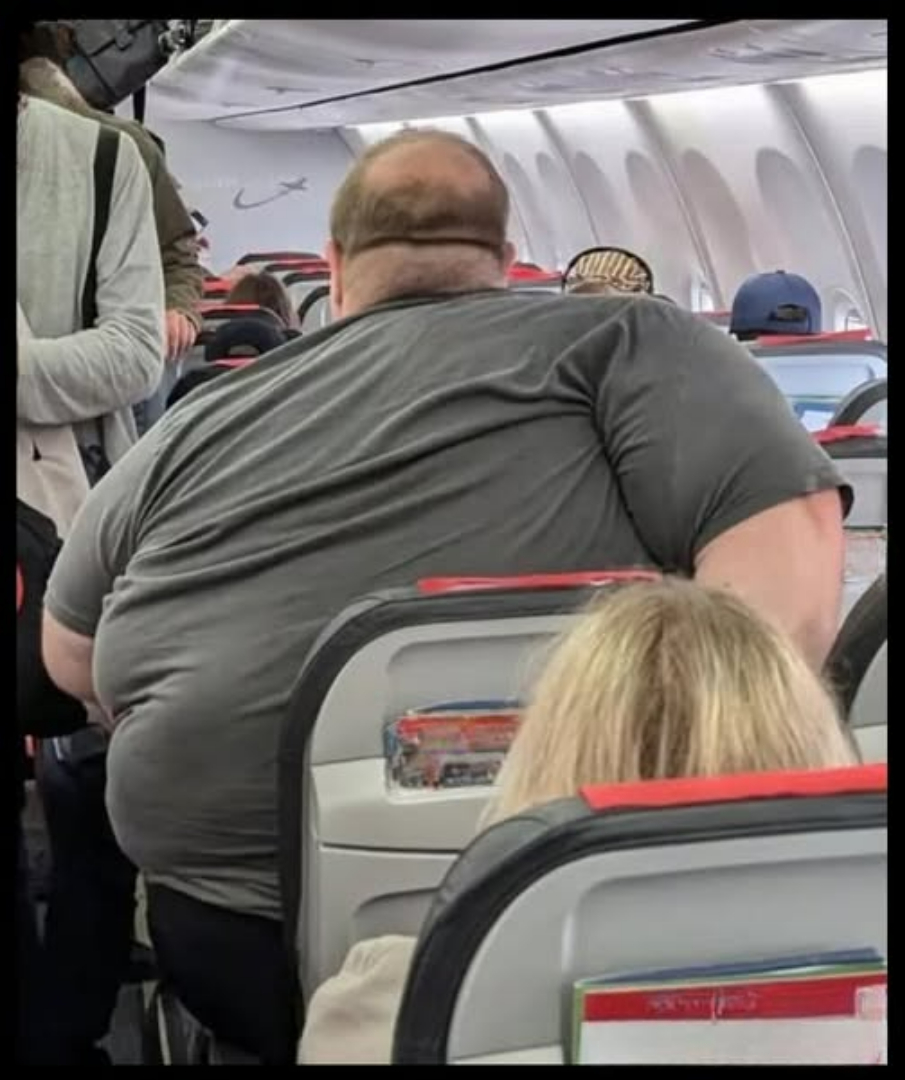A Viral Image Sparks Conversation About Body Size, Space, and Fairness in Air Travel
A recent image shared by travel advocate Christopher Elliott —and later reposted by hip-hop group Pretty Ricky —has reignited a passionate discussion about airline seating policies , passenger comfort , and the broader issue of body inclusivity in air travel .
The photo, taken on a flight from Helsinki to Copenhagen , shows a plus-sized passenger visibly struggling to fit into an airplane seat. What started as a simple post has turned into a global conversation touching on personal responsibility , airline accountability , and the need for systemic change in aviation design.
What’s Fueling the Fire?
At the heart of the debate lies this question:
Should airlines be responsible for accommodating all body types, or should passengers who can’t fit into one seat be required to purchase two?
The original post sparked thousands of comments across social media platforms, with opinions sharply divided.
🧍♂️ “Buy Two Seats” Argument:
Many commenters argued that if someone cannot comfortably sit within a single seat, they should buy an additional ticket—just like tall travelers who upgrade to extra legroom seats.
- Some compared it to movie theaters or restaurants where space comes at a premium.
- Others claimed fairness means everyone pays for what they use.
🪑 “Seats Are Too Small for Everyone” Counterpoint:
Critics of shrinking airline seats pointed out that the problem isn’t just about body size—it’s about how airlines have reduced legroom and seat width over time.
- Average economy class seat width has shrunk from 18–20 inches to as narrow as 16 inches .
- Legroom has been cut from 34+ inches pitch to as little as 28 inches in some planes.
Travel writer and consumer advocate Christopher Elliott emphasized that while airlines expect larger passengers to pay more, they are not investing in better-designed aircraft or wider seats for anyone.
Influencer Jaelynn Chaney Speaks Out
Plus-size travel influencer Jaelynn Chaney joined the conversation with a powerful message:
“The burden shouldn’t fall on individuals to fit into spaces designed for a shrinking average.”
She argues that airlines should:
- Offer free extra seating for those who need it
- Expand seat sizes to accommodate diverse bodies
- Treat larger passengers with dignity—not shame
Chaney also called for a “Fat Equality Bill of Rights” for air travel, including:
- Mandatory seat width disclosures
- No-cost seat upgrades for those who need them
- More inclusive design in new aircraft
Her stance has gained traction among advocates who believe that accessibility should not be optional —especially when flying is a public service.
Airlines Caught Between Profit and Inclusion
CONTINUE READING ON THE NEXT PAGE 🥰💕

